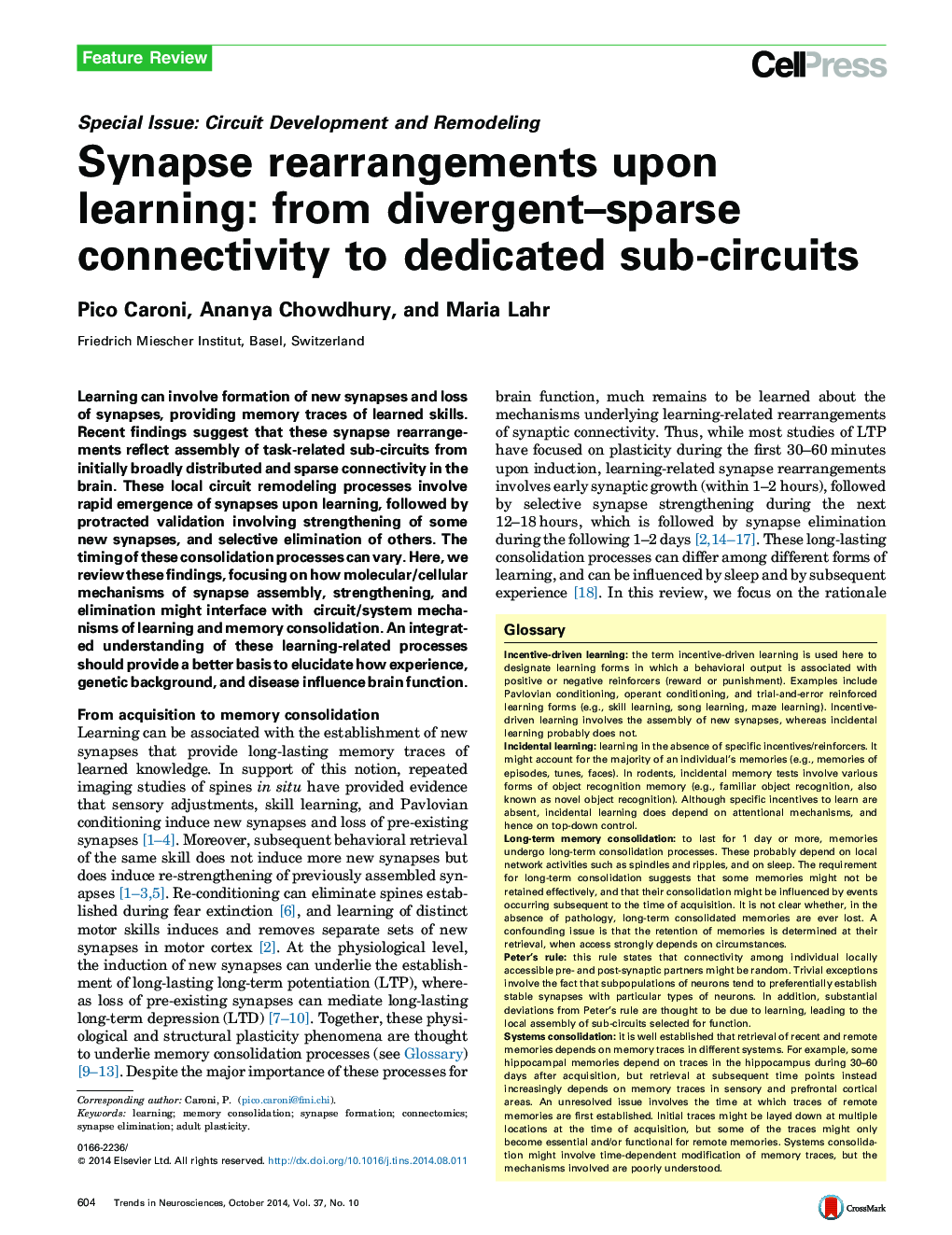| Article ID | Journal | Published Year | Pages | File Type |
|---|---|---|---|---|
| 4354177 | Trends in Neurosciences | 2014 | 11 Pages |
•Learning involves synapse gains and losses to provide memory traces of learned skills.•Synapse rearrangements produce dedicated sub-circuits that support adaptive behavior.•Synapse stabilization involves 12–15 hours of cellular and network plasticity reactions.•Memory consolidation is coupled to synapse validation and synapse elimination.
Learning can involve formation of new synapses and loss of synapses, providing memory traces of learned skills. Recent findings suggest that these synapse rearrangements reflect assembly of task-related sub-circuits from initially broadly distributed and sparse connectivity in the brain. These local circuit remodeling processes involve rapid emergence of synapses upon learning, followed by protracted validation involving strengthening of some new synapses, and selective elimination of others. The timing of these consolidation processes can vary. Here, we review these findings, focusing on how molecular/cellular mechanisms of synapse assembly, strengthening, and elimination might interface with circuit/system mechanisms of learning and memory consolidation. An integrated understanding of these learning-related processes should provide a better basis to elucidate how experience, genetic background, and disease influence brain function.
